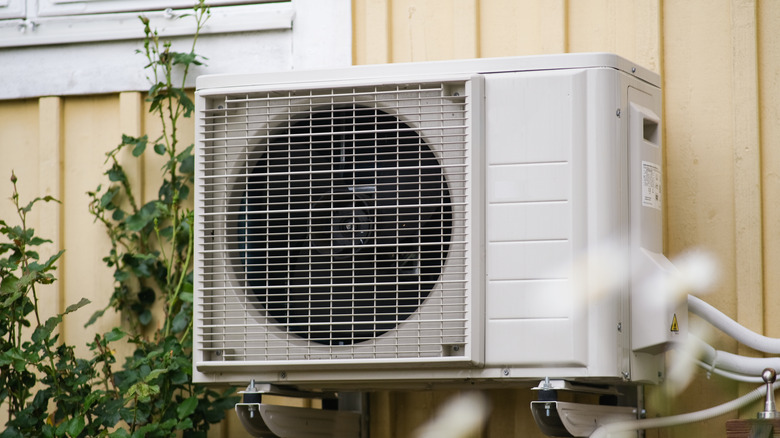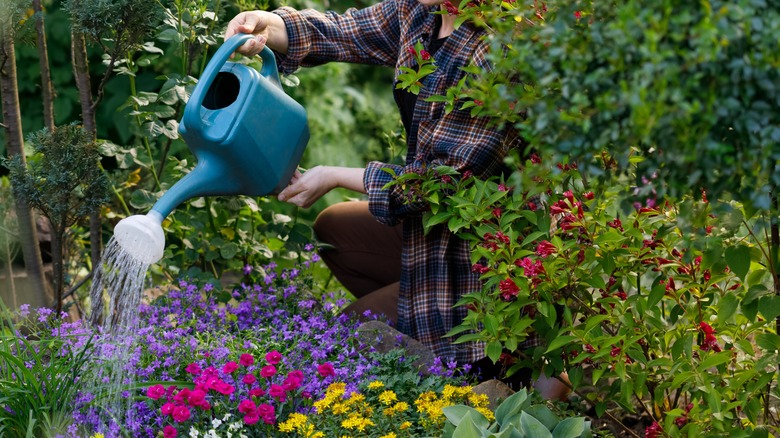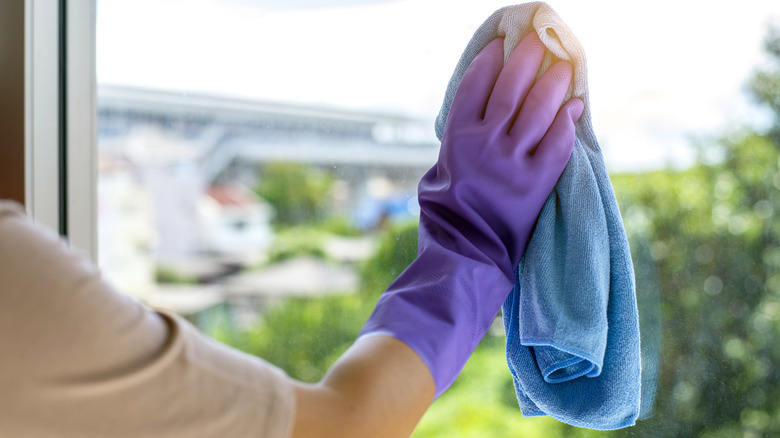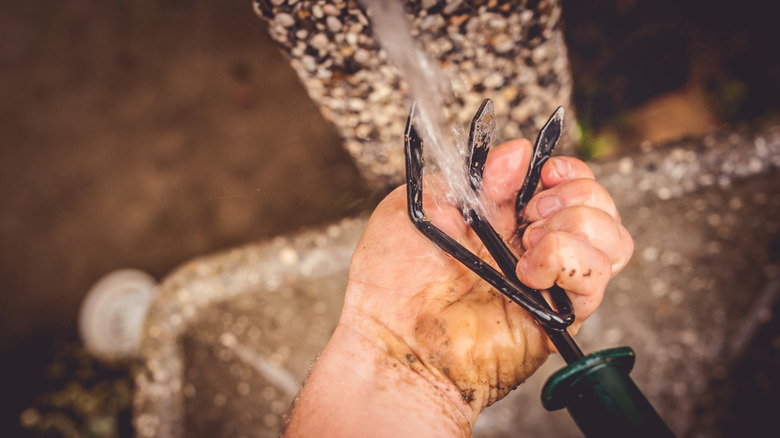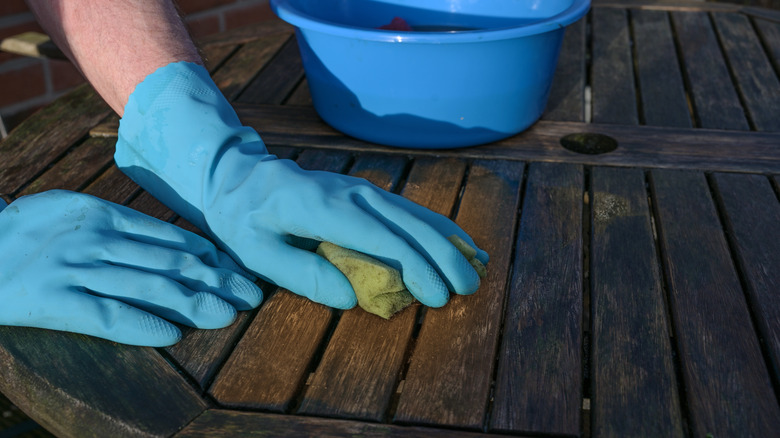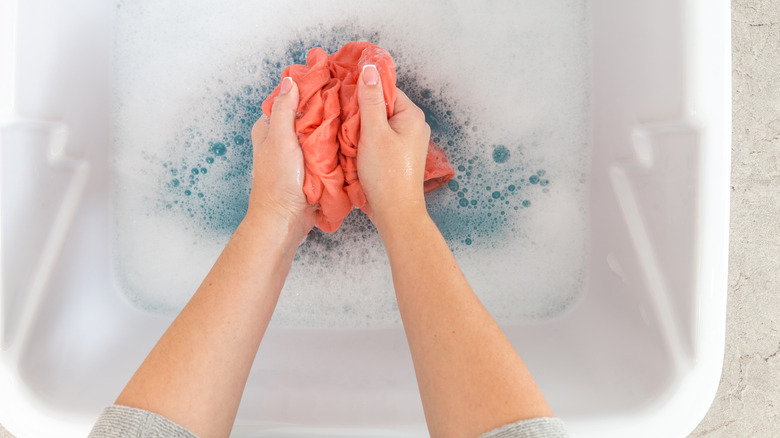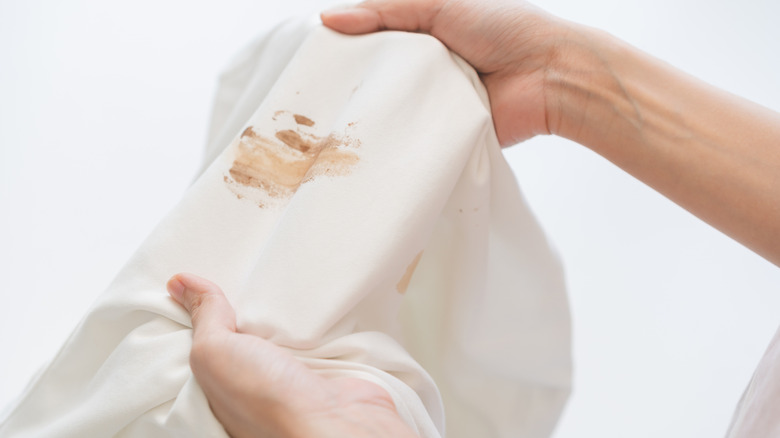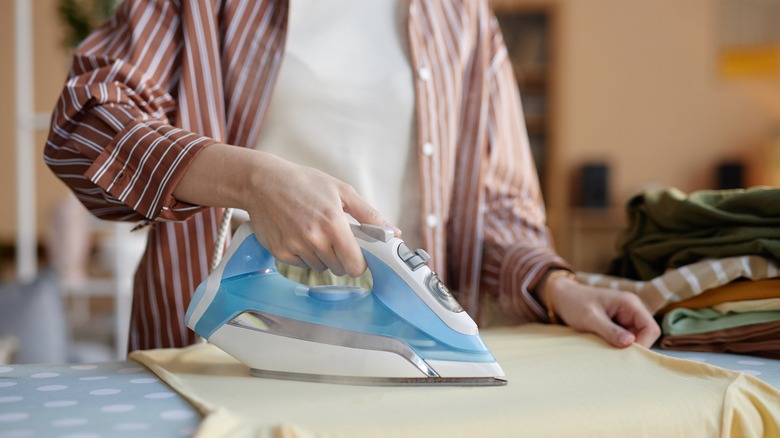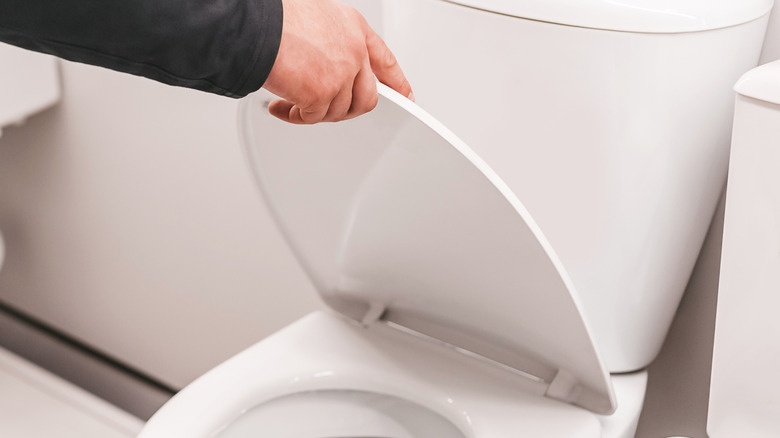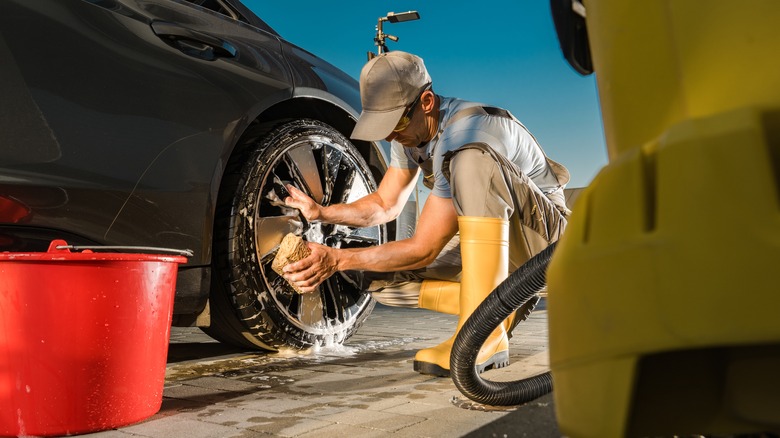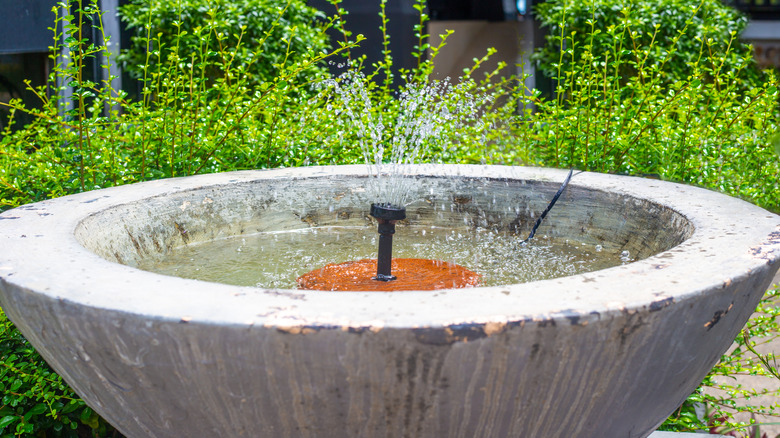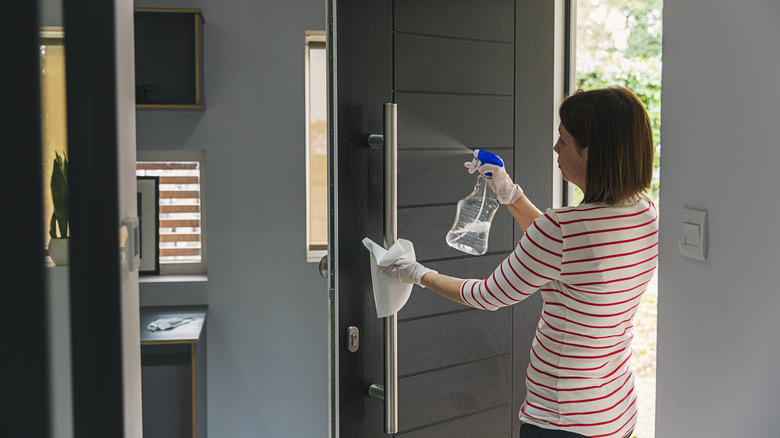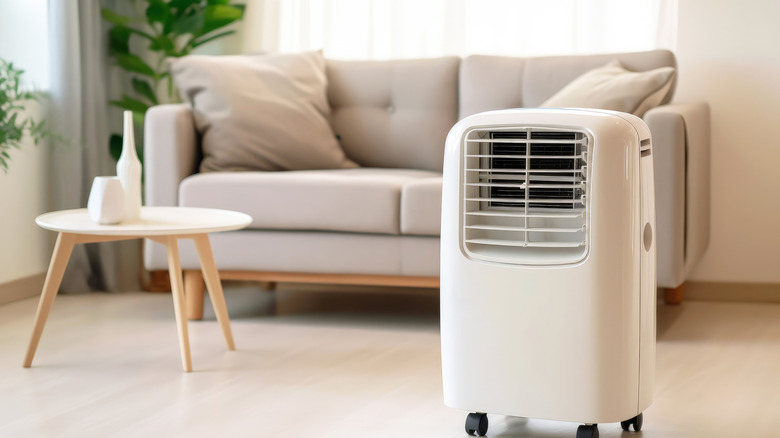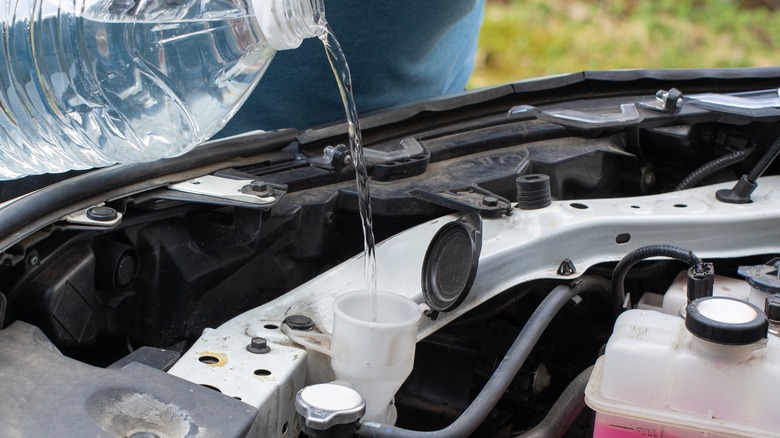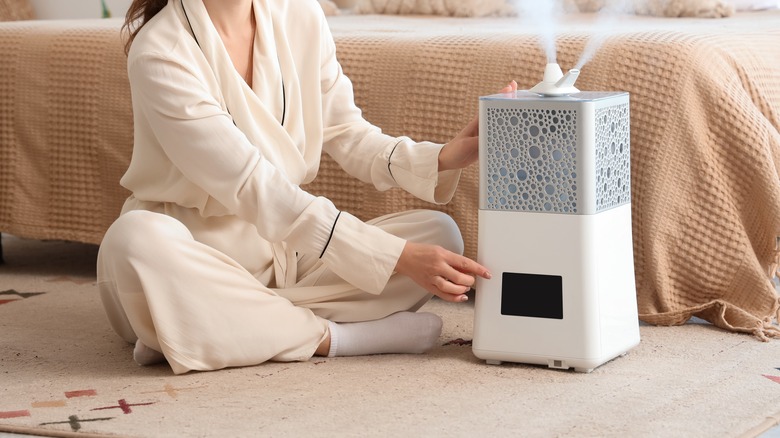Don't Let Your AC Water Go To Waste - There Are So Many Great Ways To Use It
Running your AC during the summer can have a significant impact on your electricity bills. The hours of chilling, sleeping comfortably, and cooling off after your morning sprint can add up quickly. While there's not much you can do about the cost, you can save a little on your water bills if you're smart. This is because AC units draw in warm air from your rooms to cool down the atmosphere. And when that air meets the appliance's chilled coils, the moisture here turns liquid before flowing down the attached drain line. Depending on how long you keep the device on, you might be losing out on as much as 20 gallons of usable water per day.
As this water is clean, being free of salts and chlorines, it can be used without further filtration. So, instead of letting it drain into the sewer, collect it using a large rainwater barrel or another container to lower your utility bills. Once you start collecting, you can use it to water your plants, clean your house, fill your fountains during dry months, and keep your humidifier running. It's also compatible with steam irons and your car's windshield reservoir. The only caveat is you must empty the barrel from time to time, or you'll have to deal with all sorts of pesky insects. Moreover, keep it covered to prevent pollutants from lowering its quality. That being said, don't consume the water or use it for cooking. Ready to get started? Here are 15 great ways to use AC water around the house.
Use AC water to give indoor and outdoor plants a drink
Besides sunlight and air, plants need water to grow. But it can be hard to gather enough during droughts. This will lead to your indoor and outdoor plants withering away from the high heat. An easy way out is to reuse your air conditioner's water in the garden instead of dumping it. Pour the collected water into your watering can or spray pump to give your plants a much-needed drink. However, avoid pouring cold water directly from the tubing into the soil. Let it reach room temperature first.
Use your AC water to mop your dirty floors
As a rule of thumb, you should mop your floors every week if you vacuum them diligently between sessions. But this cadence won't work if you have children or pets tracking in mud, or you stay in an area with a high rate of pollution. In such situations, you must clean your flooring whenever it looks dirty, feels sticky, or there are dust bunnies nestling in corners. However, constantly using a high amount of water to mop your floors multiple times a week will increase your utility bills. So, use your AC water instead.
Use your AC water to clean dirty windows
Windows are your portal to the outside world. How else will you admire (read: envy) your neighbor's perfect yard with its stunning flowers? Or casually spot a northern flicker while sipping your morning coffee? Alas, to enjoy your daily routine, you must keep your glass panes clean for an uninterrupted view. But rather than filling your spray bottle with tap water, use your AC's condensation. Since it lacks minerals, you won't have to worry about streaks forming on the glass due to hard water deposits.
Use your AC water to keep your gardening tools in tip-top shape
Avid gardeners will have a treasure trove of tools to shovel soil, pull out weeds, break up clumps, prepare flower beds, and deadhead plants. However, your spades, shovels, rakes, forks, and trowels won't last long if you don't clean the dirt off them before storing them away. Worse, if you use them to get rid of diseased plants and don't clean them immediately, the microorganisms can infect a healthy plant upon contact. So, always keep some AC water handy in your garden to rinse them after each session.
Use your AC water to keep your outdoor furniture clean
Furniture is an entertaining essential and is a must for your outdoor space if you plan on hosting a barbecue or soiree soon. Obviously, you don't want your guests lounging on dirty chairs or placing their food plates and cups on bird poop-covered tables. To ensure they pass your family and friends' assessment, combine a few drops of mild dish soap with your AC water (mix distilled white vinegar and water in a 1:1 ratio for sanitization). Dampen a microfiber cloth in the solution and scrub your furniture to clean it.
Use your AC water to hand wash small and delicate garments
Don't you hate it when your washer "eats" your lingerie or separates your socks from their mated pair? Although you can put them in a mesh bag if necessary, handwashing them may be your best bet. You'll also have to practice this method for your delicate or embellished garments. But instead of turning on your tap, use your AC's water. It's a good option since it doesn't contain minerals (unlike hard water) and therefore will be more gentle on your delicates.
Use AC water to spot clean your stained clothes
An important step you shouldn't skip before starting a load of laundry is pre-treating stains. Start by blotting the spots with a clean white cloth. Don't use colored fabrics because their hues may bleed through. Then, use AC water to soak your dirty garments in a detergent solution or to rinse them clean, depending on the type of stain you're dealing with. Minerals in water can react with laundry detergent and make it less effective, so the absence of these minerals in AC water makes it great for treating stains.
Add leftover AC water to your steam iron
Using distilled water in your steam iron will prevent minerals from building up in its water tank and steam vents. But you don't have to painstakingly boil and cool tap water when you use the appliance. Simply add the leftover AC water to your steam iron and use it. As mentioned above, it lacks the minerals found in tap water and won't clog your steam iron. Even if you have a newer model and combine one part tap water with one part distilled water, AC water can come in handy.
AC water can be used for flushing your toilet
Each toilet flush consumes nearly 1.5 to over 2 gallons (six to nine liters) of water. Although this is necessary for moving out solid waste from your toilet bowl, it can be excessive for liquid waste. Dual-flushing technology can save a considerable amount, but you don't have to upgrade your toilet if it's still in good condition. Instead, save money on your bills by filling a bucket with some AC water and keeping it near your toilet. Use a mug to pour water into the toilet bowl, and keep the bucket covered to discourage mosquitoes.
AC water is perfect for washing your dusty and muddy car
Hosing down your dusty and muddy car in the driveway is a quick way to clean it up. Although you'll save money on a professional car wash, this simple action will give your utility bill a boost. After all, you'd be using anywhere between 40 and 100 gallons of fresh water. Putting on a spray nozzle might help, but you'll still be using a considerable amount. So, set aside buckets filled with AC water when your automobile is due for a wash. It won't leave behind residue and will help you conserve water.
Use your AC water to fill small fountains during dry months
Pouring water in your small fountains can be an incredibly simple task if you employ a hose. But it can be difficult to dedicate this resource to such aesthetic features during dry months. And if you let it be, the water will eventually evaporate, leaving the fountain dry. Since it won't have enough water, re-circulation will be a problem and this might damage the pump. To minimize such instances and keep your features looking pretty year-round, use AC water to fill the small fountains around your house.
AC water is ideal for cleaning your front door
Your front door deals with a lot. Dust, sun, rain, and pollutants are just a few examples. Add sticky hands (or paws if you own pets) and mysterious fingerprints into the mix, and your door will lose its appeal and leave a poor impression on your guests. Regularly wiping it down with a microfiber cloth dipped in clean water can help. But don't use tap water; AC condensation will work just as well. You can even use it for soapy solutions when tackling stubborn stains.
Use AC water to fill your air cooler's water tank
If you use an air cooler to beat the heat, you're probably familiar with how often its water tank needs to be filled. These devices use water to keep a material damp, which then evaporates as warm air is drawn through it, in turn cooling the temperature of the room. You can use AC water to refill the cooling tank, saving water in times of drought when this natural resource is scarce.
Pour AC water into your car's windshield tank in summer months
Dust, dirt, and bird poop on your car's windscreen will hamper your visibility while driving. Turning on the wipers is an effortless way to keep it clean. However, your windshield tank must have some cleaning fluid inside for the wipers to work effectively. Your AC water can work in a jiffy (mix it with cleaning agents if you want) since it's free of minerals and won't block the reservoir. Just ensure you don't use it in winter because it can freeze and block the pipes.
Keep your humidifier's water tank filled with AC water
Portable humidifiers are great for combating the effects of dry air, but it can be a pain to constantly distill water to fill their reservoir. This is where AC water comes in. You don't have to filter it further because it's already free of minerals, and it can be directly added to the tank. Just remember to turn off your humidifier and unplug it before filling its water reservoir.
